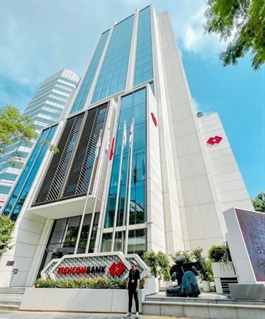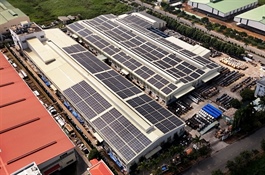Lenders lift interest rates to reflect credit-deposit imbalance
Lenders lift interest rates to reflect credit-deposit imbalance
Vietnam’s deposit market is showing renewed activity as private banks lift interest rates to attract funds, driven by robust credit growth and increasing pressure to balance funding.
Since early August, Vietnam’s monetary market has shown fresh signals regarding interest rate trends. According to the latest report from Bao Viet Securities, deposit rates have inched up at several key maturities after remaining relatively low in previous months.
Specifically, the average six-month deposit rate rose by 0.01 percentage points to 4.48 per cent, while the 12-month rate increased from 5.04 to 5.07 per cent.
This trend highlights a divergence in the banking sector. While state-owned commercial banks have largely maintained deposit rates at major maturities, many private banks have adjusted rates upward to attract deposits.
For instance, at its July 31 rate adjustment, Eximbank raised deposit rates by 0.1 percentage points for terms of 12 months and above, leaving shorter-term deposits largely unchanged. TPBank also increased rates by 0.1 percentage points across all tenors below 12 months, reflecting an effort to remain competitive in attracting deposits.
Market data as of August 8 show deposit rates for short-term tenors of one to three months ranging from 1.6 to 4.1 per cent per year, medium-term deposits of six to nine months at 2.9-5.25 per cent, and 12-month deposits at 3.7-5.6 per cent.
Saigonbank offered the highest 12-month savings rate at 5.6 per cent, followed closely by BVBank at 5.55 per cent, while NCB, Nam A Bank, BAC A BANK, and Vietbank each applied 5.5 per cent.
According to Bao Viet Securities, these adjustments came shortly after the State Bank of Vietnam (SBV) convened a meeting with commercial banks in early August, reaffirming its commitment to a flexible monetary policy and sustained liquidity support. The SBV urged banks to implement measures to reduce deposit rates to stabilise the money market and create space for lower lending rates.
“With inflation under control and exchange rate pressures moderate, the SBV is likely to maintain operating rates, deposit rates, and lending rates at relatively low levels. This is considered one of the key tools to stimulate credit demand and support economic growth,” the report noted.
MB Securities’ (MBS) latest report also echoed this view, highlighting that after a modest dip in June, deposit rates began edging up again in July. TPBank, VPBank, and Eximbank raised their deposit rates by 0.1-0.2 percentage points per year across maturities ranging from one to 36 months.
“The upward adjustment reflects an ongoing imbalance between credit growth and deposit mobilisation,” the report said. “By July 29, system-wide credit had expanded 9.8 per cent compared with the end of 2024 and 19.8 per cent on-year, according to the SBV.”
Therefore, MBS estimated that credit growth currently outpaces deposit growth by 1.3–1.5 times, creating pressure on private lenders to raise deposit rates to maintain funding stability.
MBS expects deposit rates to remain under pressure for the rest of 2025, particularly after the SBV granted banks additional credit room to meet the economy’s capital needs. At the same time, the central bank continues to urge institutions to implement synchronised measures aimed at lowering deposit rates, thereby creating scope for reduced lending rates.
Market analysts largely share this assessment. Dinh Duc Quang, managing director of the Currency Trading Division at UOB Vietnam, said that credit growth, which had already approached 10 per cent in the first half of the year, could expand by 18-20 per cent for the whole of 2025 under the current interest rate environment.
However, he noted that commercial banks’ capacity to further reduce VND deposit and lending rates in the remaining months is limited, as August deposit rates were only 0.2-0.4 percentage points lower than the same period in 2024, depending on tenor.
“These levels remain broadly in line with international USD rates and recent USD/VND exchange rate developments,” Quang told VIR. He added that external conditions, such as modest tariff impacts and successful stock market upgrades attracting foreign capital, could potentially push VND rates down by 0.5-0.75 percentage points.
Nguyen Hoang Linh, head of Research at Vietcombank Fund Management, said that the scope for further interest rate cuts is narrow. “Given the divergence between credit growth and money supply growth, the room for commercial banks to continue reducing rates is limited, and any further cuts will largely depend on external factors,” he said.
Linh underlined the pivotal role of the SBV in balancing monetary objectives, noting that interest rates remain one of the most important tools in the central bank’s multi-objective policy. He added that sustaining low rates and stability also requires coordinated government efforts, including accelerated public investment, improvements to the investment climate, boosting exports, and market diversification.
- 10:41 28/08/2025



























